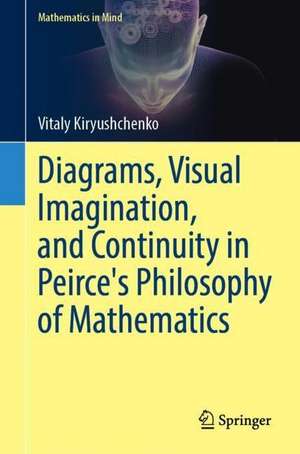Diagrams, Visual Imagination, and Continuity in Peirce's Philosophy of Mathematics: Mathematics in Mind
Autor Vitaly Kiryushchenkoen Limba Engleză Hardback – 13 mai 2023
Preț: 945.14 lei
Preț vechi: 1152.61 lei
-18% Nou
Puncte Express: 1418
Preț estimativ în valută:
180.85€ • 189.33$ • 149.64£
180.85€ • 189.33$ • 149.64£
Carte tipărită la comandă
Livrare economică 05-19 aprilie
Preluare comenzi: 021 569.72.76
Specificații
ISBN-13: 9783031232442
ISBN-10: 3031232445
Ilustrații: X, 172 p. 1 illus.
Dimensiuni: 155 x 235 mm
Greutate: 0.44 kg
Ediția:2023
Editura: Springer International Publishing
Colecția Springer
Seria Mathematics in Mind
Locul publicării:Cham, Switzerland
ISBN-10: 3031232445
Ilustrații: X, 172 p. 1 illus.
Dimensiuni: 155 x 235 mm
Greutate: 0.44 kg
Ediția:2023
Editura: Springer International Publishing
Colecția Springer
Seria Mathematics in Mind
Locul publicării:Cham, Switzerland
Cuprins
1. Introduction.- 2. Meritocratism, Errors, and the Community of Inquiry.- 3. Logic and Mathematics.- 4. Peirce's Transcendental Deduction.- 5. Sign Relation. - 6 One, Two, Three.- 7. Iconicity and Novelty.- 8. The General and the Particular.- 9. Diagrams Between Images and Schema.- 10. Existential Graphs.- 11. Iconicity, Similarity, and Habitual Action.- 12. Mapping Philosophy.- 13. L'Image-Mouvement, Mathematically Sublime, and the Perception of Totality.- 14. The Metaphysics of Continuity.- 15. Conclusion.
Recenzii
“An extensive bibliography is provided. The book is addressed to those specializing in philosophy, mathematics, and intellectual history. It could also be of interest to a wider audience by showing what all those areas have in common in Peirce's case.” (Roman Murawski, Mathematical Reviews, April, 2024)
Textul de pe ultima copertă
This book is about the relationship between necessary reasoning and visual experience in Charles S. Peirce’s mathematical philosophy. It presents mathematics as a science that presupposes a special imaginative connection between our responsiveness to reasons and our most fundamental perceptual intuitions about space and time. Central to this view on the nature of mathematics is Peirce’s idea of diagrammatic reasoning. In practicing this kind of reasoning, one treats diagrams not simply as external auxiliary tools, but rather as immediate visualizations of the very process of the reasoning itself. Thus conceived, one's capacity to diagram their thought reveals a set of characteristics common to ordinary language, visual perception, and necessary mathematical reasoning. The book offers an original synthetic approach that allows tracing the roots of Peirce’s conception of a diagram in certain patterns of interrelation between his semiotics, his pragmaticist philosophy, his logical and mathematical ideas, bits and pieces of his biography, his personal intellectual predispositions, and his scientific practice as an applied mathematician.
Caracteristici
Provides a wider context for the study of visual experience in mathematics Compares Peirce’s idea of diagrammatic reasoning with Kant’s transcendental schematism Offers a fresh perspective on the relationship between visual experience and language












